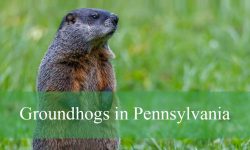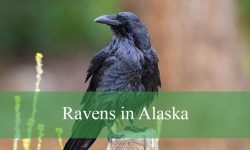Across the state of Michigan, large soaring birds can often be spotted circling overhead, scanning the landscape for opportunities. Among these aerial scavengers, vultures stand out as some of the most efficient recyclers in the natural world. They feed on carrion and help maintain the balance of ecosystems by preventing the spread of disease. In Michigan, two species of vultures are either regularly present or increasingly expanding their range. These are the Turkey Vulture and the Black Vulture.
Understanding how to identify these two species, where they can be observed, and what roles they play in the environment is essential for birdwatchers, photographers, and anyone interested in local wildlife. While both share similarities as scavengers, they differ in size, appearance, and behavior. Michigan offers a unique chance to study these birds, particularly as Black Vultures slowly extend their distribution northward into the Great Lakes region.
This article will provide a detailed guide to the two types of vultures in Michigan, highlighting their features, habitats, and identification tips.
Turkey Vulture in Michigan

Characteristics and Identification
The Turkey Vulture (Cathartes aura) is by far the most common vulture in Michigan. This species is large, with a wingspan that can reach nearly six feet. Its plumage is mostly dark brown to black, but in flight, the undersides of the flight feathers appear silvery-gray, creating a sharp contrast with the darker body. One of the most recognizable features is the bright red, featherless head in adults, while juveniles have dark grayish heads until they mature.
In the air, Turkey Vultures are skilled gliders. They hold their wings in a shallow “V” formation, known as a dihedral, and tilt from side to side while soaring. Unlike many raptors, they do not flap frequently, instead relying on rising thermals to stay aloft. When seen up close, their hooked beaks are pale in color and perfectly adapted for tearing into carcasses.
Behavior and Feeding Habits
Turkey Vultures are primarily scavengers and very rarely hunt live prey. They possess an extraordinary sense of smell, which is unusual among birds. This keen olfactory ability allows them to detect gases produced by decaying animals, even under dense forest canopies. When they find a carcass, they use their strong beaks to tear open tough hides, sometimes providing access for other scavengers.
Their role in the ecosystem cannot be overstated. By consuming carrion, they help prevent the spread of diseases that would otherwise thrive in decomposing bodies. Despite their grim reputation, Turkey Vultures are extremely beneficial to human health and the environment.
Habitat and Range in Michigan
In Michigan, Turkey Vultures are summer residents. They usually arrive in early spring when temperatures rise and thermals are strong enough to support their soaring flight. They spread across the state, from rural farmland and forest edges to urban areas where roadkill is common. Their adaptability allows them to thrive in a wide range of habitats.
By late fall, Turkey Vultures migrate southward, traveling as far as Central and South America. Their presence in Michigan is therefore seasonal, with peak visibility during the warmer months. Birdwatchers often spot them soaring in groups, particularly in southern and central Michigan, though they can be found statewide.
Breeding and Nesting
Unlike many birds, Turkey Vultures do not build elaborate nests. Instead, they lay their eggs in sheltered sites such as hollow logs, caves, or abandoned buildings. The typical clutch consists of two eggs, which both parents incubate. Chicks are covered in white down and are fed regurgitated food by the adults.
Nesting sites in Michigan are often found in secluded areas with minimal disturbance. Once the young are fledged, families can sometimes be seen foraging together until migration begins.
Black Vulture in Michigan

Characteristics and Identification
The Black Vulture (Coragyps atratus) is a less common but increasingly observed vulture in Michigan. Slightly smaller than the Turkey Vulture, it has a wingspan of about five feet and a stockier build. Its plumage is entirely black, and its featherless head is grayish with a wrinkled appearance. Unlike the long tails of Turkey Vultures, Black Vultures have short, square tails that are noticeable in flight.
In the air, Black Vultures flap their wings more frequently than Turkey Vultures. Their most distinctive field mark is the presence of bright white patches near the tips of their wings, which stand out against their otherwise dark plumage. Observers often note their more direct, deliberate flight compared to the buoyant soaring of Turkey Vultures.
Behavior and Feeding Habits
Black Vultures are opportunistic feeders, relying more on sight than smell to locate carrion. They often follow Turkey Vultures, which can detect carcasses from a distance, and then aggressively compete for food once they arrive. This species is more social than the Turkey Vulture, frequently feeding in groups and sometimes roosting communally.
Although carrion is their primary food source, Black Vultures are known to occasionally prey on weakened or newborn animals, particularly livestock. This behavior has sometimes brought them into conflict with farmers. Despite this, their ecological role remains significant, as they still contribute to cleaning the environment of dead animals.
Habitat and Range Expansion
Historically, Black Vultures were restricted to the southeastern United States. However, over the last few decades, their range has steadily expanded northward. In Michigan, they are most often reported in the southern counties, particularly near the Ohio and Indiana borders. Sightings are still relatively uncommon compared to Turkey Vultures, but records show they are appearing more frequently each year.
As climate patterns shift and populations grow, it is possible that Black Vultures will become more established in Michigan. For now, they are considered rare visitors but one that birdwatchers should keep an eye out for, especially in southern regions.
Breeding and Nesting
Black Vultures also avoid building traditional nests. They lay their eggs on bare ground in sheltered sites such as caves, hollow stumps, or abandoned buildings. Typically, two eggs are laid, and both parents participate in incubation and chick-rearing. Their strong social bonds extend to family groups, with juveniles often staying with parents for extended periods.
In states to the south, communal roosting behavior is a common sight, with dozens of Black Vultures gathering together at night. As their population grows in Michigan, such roosting habits may become more familiar to local birdwatchers.
Comparison Between Turkey Vulture and Black Vulture in Michigan
Feature |
Turkey Vulture (Cathartes aura) |
Black Vulture (Coragyps atratus) |
|---|---|---|
Size & Wingspan |
Larger, wingspan up to 6 feet |
Smaller, wingspan about 5 feet |
Plumage |
Dark brown to black body with silvery-gray flight feathers |
Entirely black body with white patches at wing tips |
Head Color |
Featherless red head in adults, gray in juveniles |
Grayish, wrinkled, featherless head |
Tail Shape |
Long and rounded |
Short and square |
Flight Pattern |
Soars with wings in V-shape (dihedral), minimal flapping |
Flaps more frequently, direct flight |
Sense of Smell |
Excellent, can detect carrion under forest cover |
Poor, relies on sight and follows Turkey Vultures |
Range in Michigan |
Common statewide in summer, migrates south in winter |
Rare but increasing, mostly in southern Michigan |
Feeding Behavior |
Primarily carrion, solitary or small groups |
Carrion, more aggressive, often in flocks |
Breeding Habits |
Lays eggs in caves, hollow logs, or abandoned structures |
Lays eggs on bare ground in caves or sheltered sites |
Conservation Status |
Stable and widespread |
Expanding range, less common in Michigan |
Ecological Importance of Vultures in Michigan
Both Turkey Vultures and Black Vultures provide essential ecological services in Michigan. By consuming carrion, they help recycle nutrients back into the environment and reduce the spread of harmful bacteria. Their stomach acids are strong enough to neutralize dangerous pathogens such as anthrax and rabies, making them natural sanitizers of the landscape.
Without vultures, carcasses would linger longer on the ground, increasing the risk of disease outbreaks among wildlife and even humans. Their presence, therefore, directly contributes to public health as well as ecosystem balance. Understanding and appreciating their role helps shift perception away from negative stereotypes often associated with scavengers.
Best Times and Places to Observe Vultures in Michigan
The best time to observe Turkey Vultures in Michigan is during spring and summer, when they are abundant throughout the state. Open landscapes, agricultural fields, and roadside corridors are particularly good places to spot them soaring overhead. Early morning and late afternoon often provide the best lighting conditions for observation and photography.
Black Vultures, though less common, are most likely to be seen in the southern counties of Michigan. They are often found in mixed flocks with Turkey Vultures, especially near large food sources or communal roosts. Birdwatchers in southern Michigan should pay attention during warm days when thermals provide good soaring conditions.
State parks, wildlife refuges, and open rural landscapes are excellent locations for observing both species. Keeping binoculars or a camera ready can help capture their distinctive flight patterns.
Conclusion
Michigan is home to two fascinating vulture species, each playing a vital role in maintaining healthy ecosystems. The Turkey Vulture remains the dominant and most widespread, while the Black Vulture represents a newcomer steadily expanding its range northward. Together, they contribute to natural waste management and help maintain balance in the environment.
By learning to identify these birds and understanding their behaviors, residents and visitors of Michigan can gain a deeper respect for vultures. They may not be the most glamorous of birds, but their importance to nature cannot be overstated. The next time you see a large dark bird circling overhead in Michigan, you will know exactly which vulture it is and why it deserves admiration.
FAQs about Vultures in Michigan
Are vultures common in Michigan?
Turkey Vultures are very common in Michigan during the warmer months, especially from spring through early fall. Black Vultures are much less common but are being spotted more frequently in the southern parts of the state.
Do vultures stay in Michigan year-round?
Turkey Vultures migrate south for the winter and return in spring. Black Vultures are not year-round residents either, though a few individuals may occasionally linger during mild winters.
How can you tell a Turkey Vulture from a Black Vulture in flight?
Turkey Vultures soar with wings held in a V-shape and have silvery-gray flight feathers. Black Vultures have shorter tails, flap more often, and show bright white wing tips near the ends of their wings.
Are vultures dangerous to humans or pets?
Vultures do not pose a direct threat to humans or pets. They feed almost exclusively on carrion and avoid confrontation. However, Black Vultures have occasionally been reported preying on weak or newborn livestock.
Why are vultures important to Michigan’s ecosystem?
By consuming carcasses, vultures prevent the spread of disease and help recycle nutrients into the environment. Their unique digestive systems destroy harmful bacteria, making them vital to ecological and public health.






